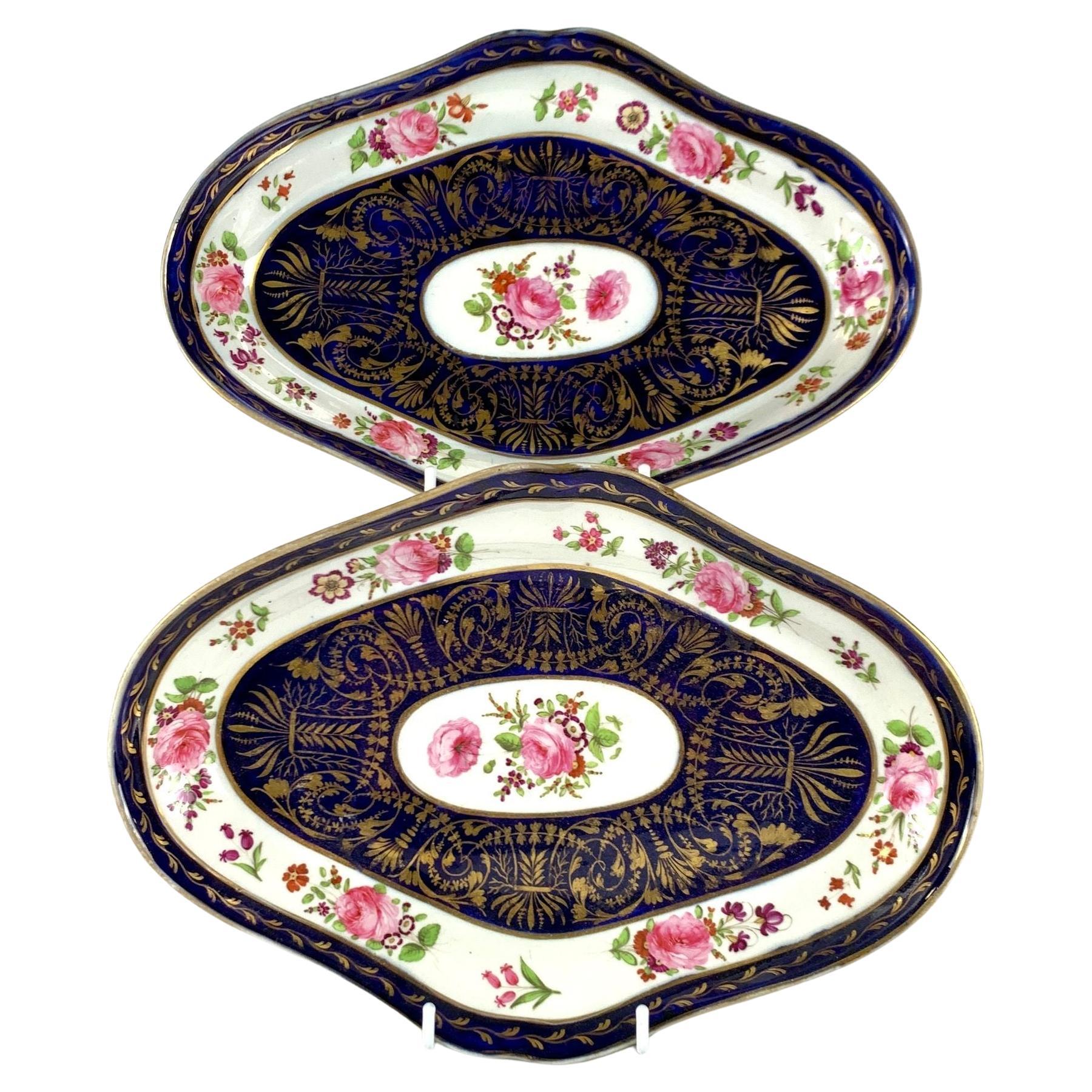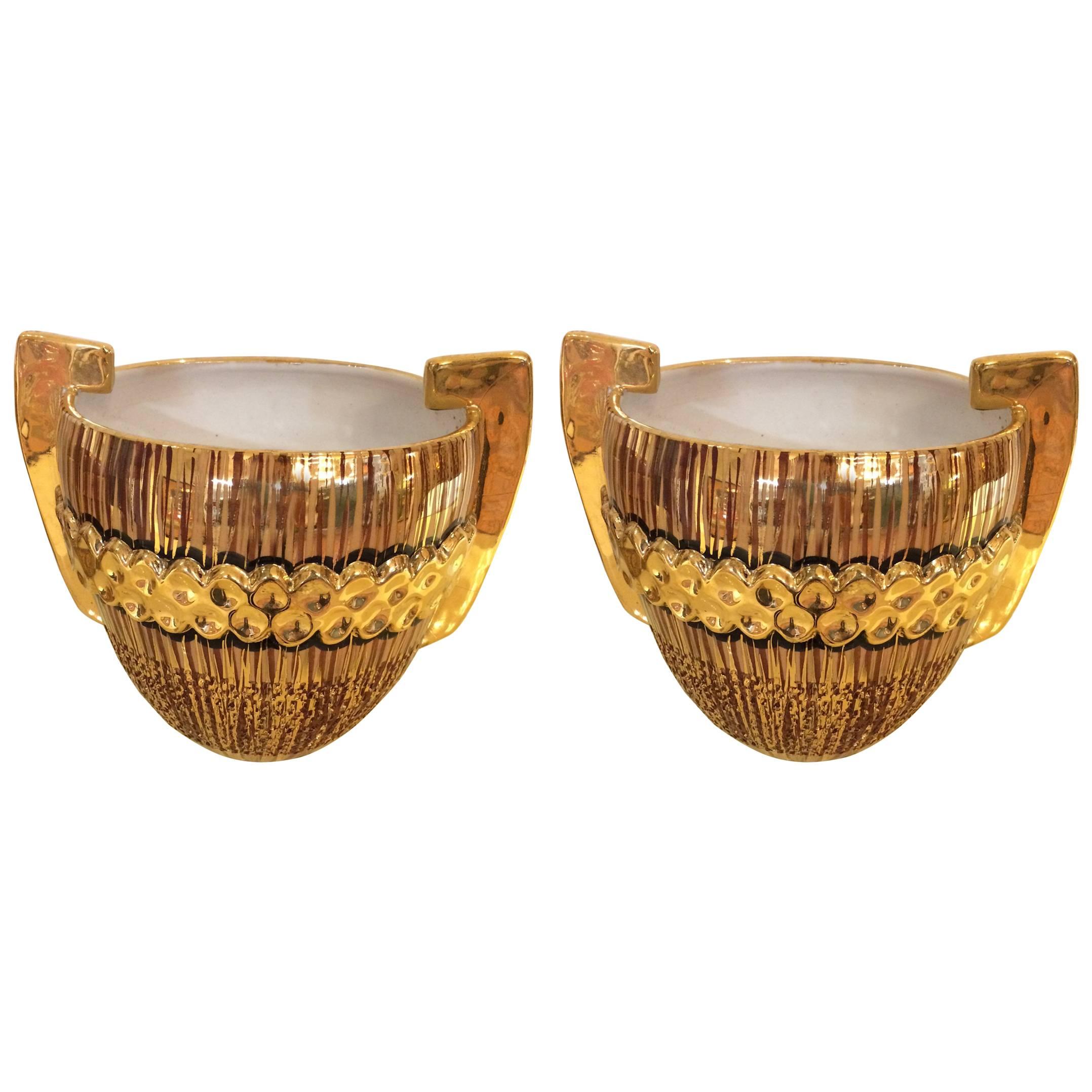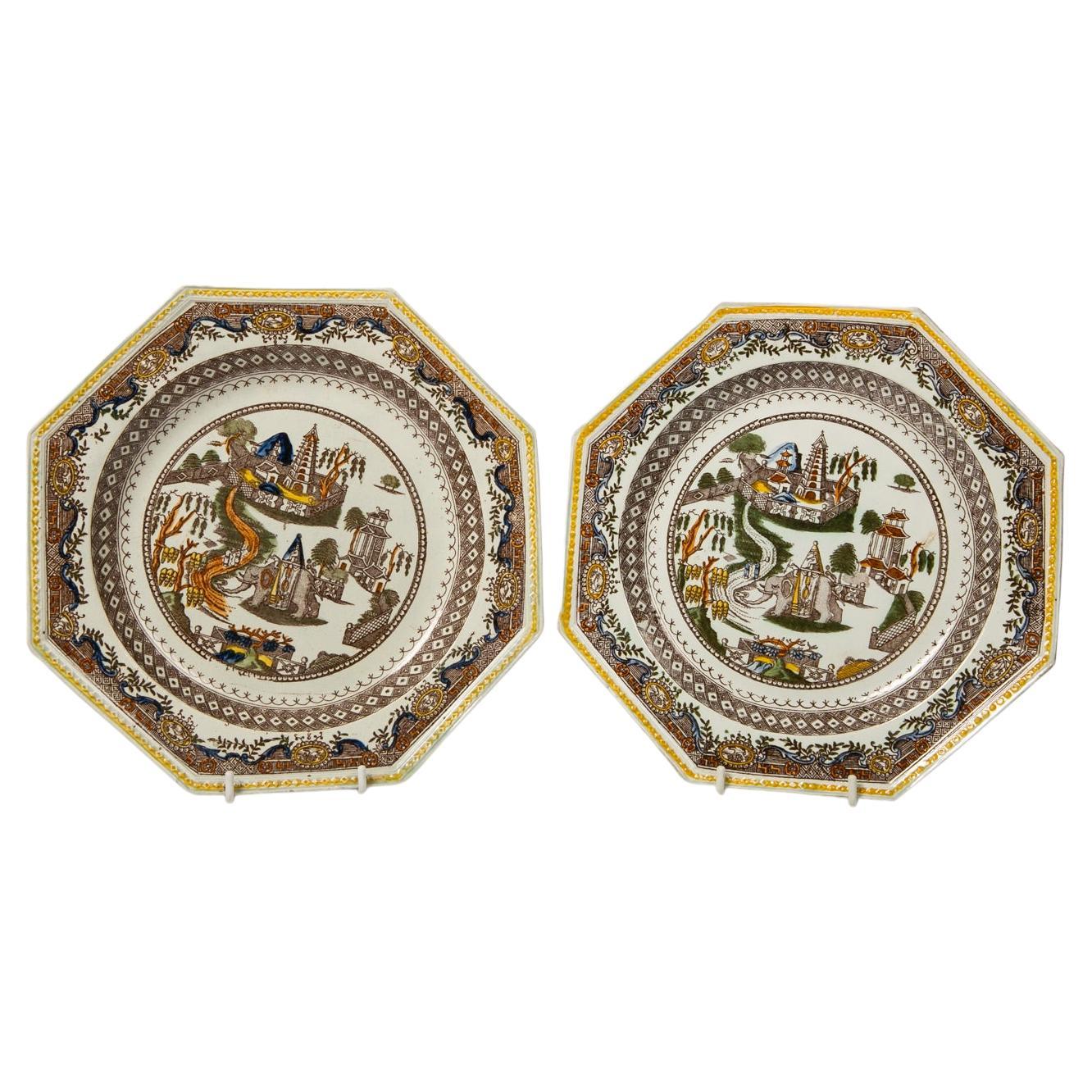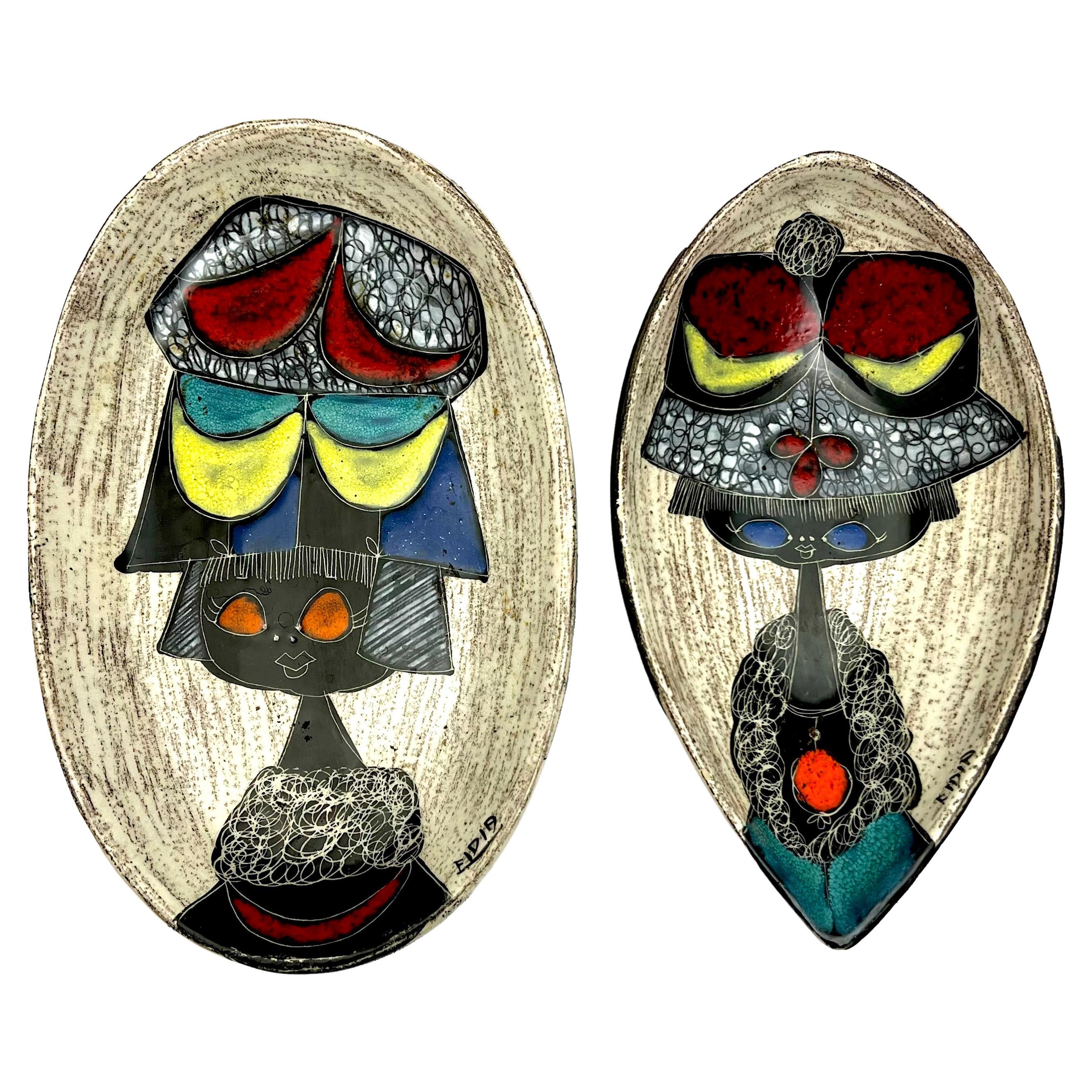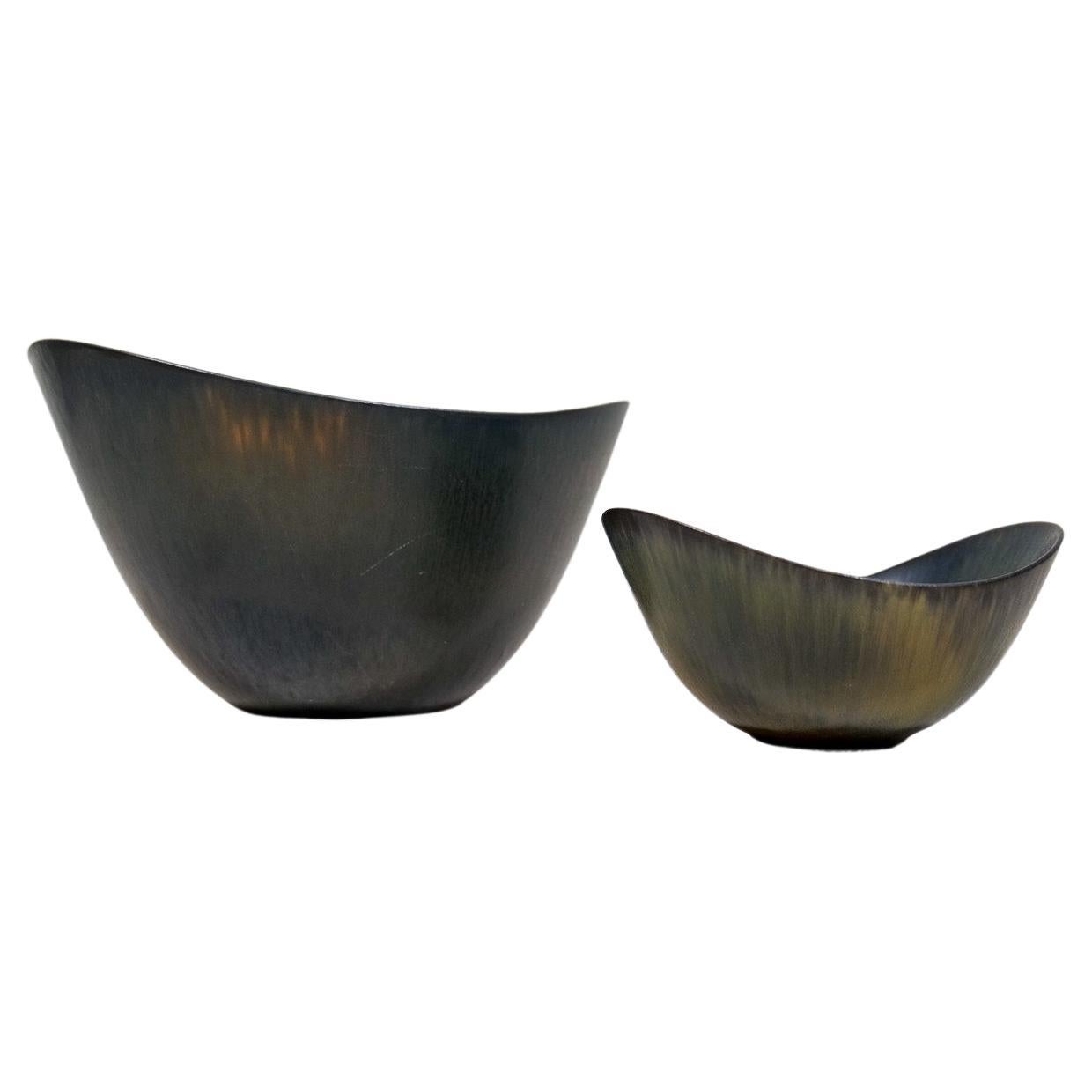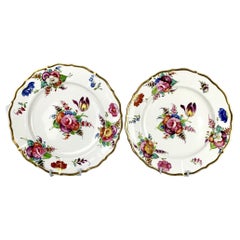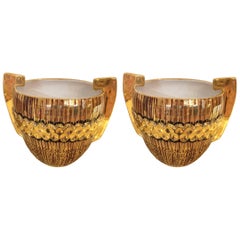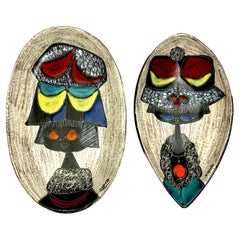
Pair of Antique Coalport Church Gresley PorcelainDishes with Armorial Crests
View Similar Items
Want more images or videos?
Request additional images or videos from the seller
1 of 7
Pair of Antique Coalport Church Gresley PorcelainDishes with Armorial Crests
About the Item
- Creator:Coalport Porcelain (Manufacturer)
- Dimensions:Height: 1.5 in (3.81 cm)Width: 10.75 in (27.31 cm)Depth: 7.5 in (19.05 cm)
- Sold As:Set of 2
- Style:Neoclassical (Of the Period)
- Materials and Techniques:
- Place of Origin:
- Period:
- Date of Manufacture:Circa 1810
- Condition:
- Seller Location:Katonah, NY
- Reference Number:1stDibs: 15061186651043
About the Seller
5.0
Recognized Seller
These prestigious sellers are industry leaders and represent the highest echelon for item quality and design.
Platinum Seller
These expertly vetted sellers are 1stDibs' most experienced sellers and are rated highest by our customers.
Established in 1962
1stDibs seller since 2009
422 sales on 1stDibs
Typical response time: 1 hour
More From This SellerView All
- Pair Antique English Porcelain Dishes Made by Coalport, Circa 1825By Coalport PorcelainLocated in Katonah, NYThis pair of dishes were hand-painted at Coalport in England in the early 19th century. The colors are fabulous; we see pink, purple, orange, blue, green, yellow, and turquoise. Flo...Category
Antique Early 19th Century English Porcelain
MaterialsPorcelain
- Set Four Antique English Dishes Made By Coalport Hand-Painted Circa 1810By Coalport PorcelainLocated in Katonah, NYThese four exquisite Coalport "Church Gresley" pattern dishes are decorated with black trapezoids, pink roses, cornflower sprigs, and fabulous gilding! In our opinion, the exceptiona...Category
Antique Early 19th Century English Neoclassical Decorative Dishes and Vi...
MaterialsPorcelain
- Pair Coalport Cobalt Blue Gilded Dishes Hand Painted with Roses England C-1820By Coalport PorcelainLocated in Katonah, NYThis pair of Coalport Dishes was hand painted at the Coalport factory, England circa 1820. The dishes are decorated with panels of pink roses on crisp white porcelain surrounded by c...Category
Antique Early 19th Century Decorative Dishes and Vide-Poche
MaterialsPorcelain
- Pair Antique Plates Showing an Elephant in an Imaginary Asian SettingLocated in Katonah, NYThis pair of antique English dishes show a fabulous bird's eye view of an elephant in an imaginary Asian setting. Two figures ride an Indian el...Category
Antique Early 1800s English Chinoiserie Ceramics
MaterialsPearlware
- Antique English Pottery Shell Shaped Dish with Yellow Ground Made circa 1820By SpodeLocated in Katonah, NYThis exceptional creamware shell shaped dish has a lovely yellow ground decorated with brown chrysanthemums, scrolling vines, and golden leaves. The...Category
Antique Early 19th Century English Regency Decorative Dishes and Vide-Poche
MaterialsCreamware
- Set Fourteen Coalport Money Tree Porcelain Dishes Hand-Painted England, C-1820By Coalport PorcelainLocated in Katonah, NYWe proudly offer this set of fourteen Coalport Money Tree pattern plates. This fabulous pattern is also known as the Rock and Tree pattern. It is ...Category
Antique Early 19th Century English Dinner Plates
MaterialsPorcelain
You May Also Like
- Two Pairs of Italian Maiolica Baskets, circa 1780By Antonio FerrettiLocated in Milano, ITTwo pairs of maiolica baskets Antonio Ferretti Manufacture Lodi, circa 1770-1790 Maiolica polychrome decorated “a piccolo fuoco” (third fire). Measures: A) Height 3.54 x 6.69 x 9.84 in (9 x 17 x 25 cm); B) Height 3.93 x 7.48 x 11.02 in (10 x 19 x 28 cm). Total weight 4.85 lb (2.200 kg) State of conservation: A) One of the smaller baskets has some areas of restoration, the other slight chipping from use; B) One of the larger baskets is intact and the other shows a clearly glued break. The mold with which the baskets were forged simulates a wicker weave. The two larger works have high, vertical walls, with branch-shaped handles penetrating the weave. The painted decorations, small polychrome flowers applied only externally, highlight the points where the weaves intersect. The decision to leave the center of the basket devoid of decoration is highly unusual, but given the size and complexity of the shape, as well as the quality of the enamel, it is possible to hypothesize that it represents a precise choice in manufacturing or for a particular client. The two smaller baskets have small, twisted handles and, on the outside, reproduce more decisively the characteristic wicker weave, obtained through thin molded lines. The interior exhibits a rich, typical decoration of naturalistic flowers: a bunch centered around a main flower and secondary stems accompanied by small “semis”. The exterior of these works is also adorned with small little flowers where the weaves intersect. The size and morphological characteristics of the baskets confirm their attribution to the Lodi factory of Antonio Ferretti between 1770 and 1790, during its most successful period; by this point his original reworking of the "Strasbourg" decoration, known as "old Lodi", had achieved great fame even outside Italy. This decorative choice represented a strong point of the Lodi factory, which established itself thanks to the vivid nature of the colors made possible by the introduction of a new technique perfected by Paul Hannong in Strasbourg and which Antonio Ferretti introduced in Italy. This production process, called “piccolo fuoco” (third fire), allowed the use of a greater number of colors than in the past; in particular, the purple of Cassius, a red made from gold chloride, was introduced. Its use allowed for many more tones and shades, from pink to purple. The Ferretti family had started their maiolica manufacturing business in Lodi in 1725. The forefather Simpliciano had started the business by purchasing an ancient furnace in 1725 and, indeed, we have evidence of the full activity of the furnaces from April of the same year (Novasconi-Ferrari-Corvi, 1964, p. 26 n. 4). Simpliciano had started a production of excellence also thanks to the ownership of clay quarries in Stradella, not far from Pavia. The production was so successful that in 1726 a decree of the Turin Chamber came to prohibit the importation of foreign ceramics, especially from Lodi, to protect internal production (G. Lise, La ceramica a Lodi, Lodi 1981, p. 59). In its initial stages, the manufacture produced maolicas painted with the “a gran fuoco” (double fire) technique, often in turquoise monochrome, with ornamentation derived from compositional modules in vogue in Rouen in France. This was also thanks to the collaboration of painters like Giorgio Giacinto Rossetti, who placed his name on the best specimens next to the initials of the factory. In 1748 Simpliciano made his will (Gelmini, 1995, p. 30) appointing his son Giuseppe Antonio (known as Antonio) as universal heir. After 1750, when Simpliciano passed away, Antonio was directly involved in the maiolica factory, increasing its fortunes and achieving a reputation on a European level. Particularly important was the aforementioned introduction in 1760 of the innovative “a piccolo fuoco” (third fire) processing, which, expanding the ornamental repertoire with Saxon-inspired floral themes, could commercially compete with the German porcelains that had one of its most renowned offerings in the naturalistic Deutsche Blumen. Antonio Ferretti understood and promoted this technique and this decoration, proposing it in a fresher and more corrective version, less linked to botanical tables...Category
Antique 1770s Italian Neoclassical Ceramics
MaterialsMaiolica
- Pair of Glistening Cachepots PlantersLocated in Hopewell, NJTwo eye-catching Italian cachepots, planters, or beautiful accessory pottery having a glamorous gilded glaze and handles.Category
Vintage 1960s Italian Decorative Bowls
MaterialsCeramic
$750 Sale Price / set21% Off - Pair of Midcentury Italian Figural Plates by FidiaBy FantoniLocated in New York, NYFabulous Italian hand painted figural bowl and tray by Fidia. These big eyed girls are in the style of Fantoni. Bound in leather on the back these are gre...Category
Vintage 1960s Italian Decorative Dishes and Vide-Poche
MaterialsCeramic
- Pair of Chinese Jun Ware Bowls, Yuan DynastyLocated in Houston, TXPair of Chinese Jun ware bowls, Yuan dynasty (circa 1250-1400): Large Jun Yao, purple splashed stone ware bowl Yuan Dynasty, China. Well potted, on a neatly cu...Category
Antique 15th Century and Earlier Chinese Decorative Bowls
MaterialsPorcelain, Stoneware
$2,800 / set - Midcentury Pair of Ceramic Bowls Carl-Harry Stålhane Rörstrand, Sweden, 1950sBy Rörstrand, Carl-Harry StålhaneLocated in Hillringsberg, SEThese bowls made in Sweden 1950s for Rörstrand and designed by one of the great during that period, Carl-Harry Stålhane. These bowls has a small foot which it stands on. There is a s...Category
Vintage 1950s Swedish Mid-Century Modern Ceramics
MaterialsCeramic, Stoneware
- Midcentury Pair of Bowls Rörstrand Sweden by Gunnar Nylund, 1950sBy Rörstrand, Gunnar NylundLocated in Hillringsberg, SEPair of bowls Rörstrand made in Sweden by Gunnar Nylund in the 1950s. Wonderful glaze on these bowls. They are both in good condition Measures: 16 x 12 X 8 cm.Category
Vintage 1950s Swedish Mid-Century Modern Ceramics
MaterialsCeramic



